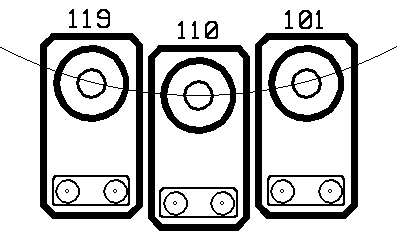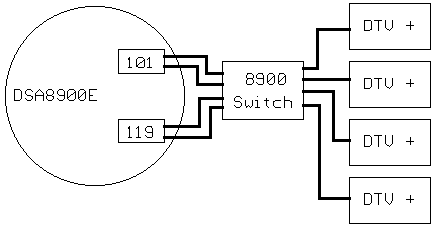
Indoor installation of switches is recommended. The use of powered switches where shown is strongly recommended. General information about multi-dish switches is available here.
1A) Normal usage - DIRECTV+ from 101 and 119

1B) TV antenna integration using a 5 in / 4 out 22 kHz multi-dish switch. Some examples of a suitable switches are the NAS SMS-5/4P , the Eagle Aspen SMS-5415 and the Spaun SMS 5400.
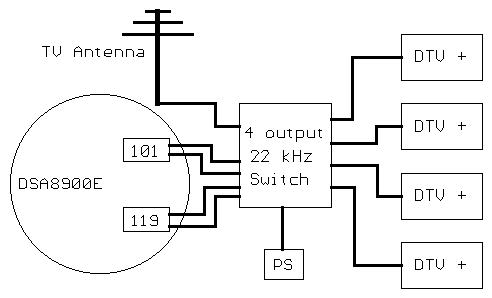
1C) The prefered method for 5 or more receivers. Some examples of a suitable switches are the NAS SMS-5/8P, the Spaun SMS 5801, and the Spaun SMS 5601 (6 output).

1D) Alternate method for 6 receivers. Two are limited to 101 only.
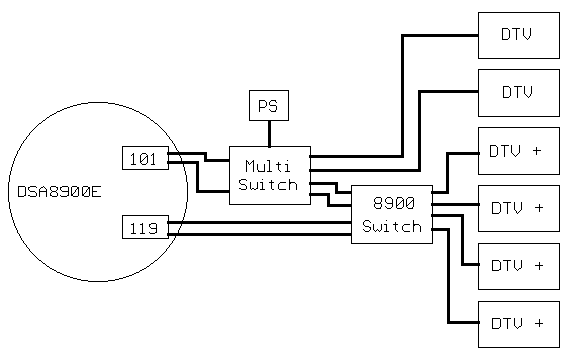
1E) Alternate method for 8 receivers. Four are limited to 101 only. The splitters must be 2 GHz satellite splitters with power pass on one port. TV/CATV splitters can not be used! The 13 volt inputs of each switch must be connected to one splitter and the 18 volt inputs to the other.

1F) Alternate method for 6 receivers. Not recommended!
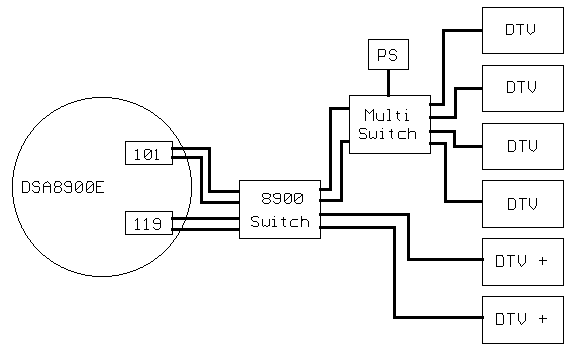
2) Normal usage - DIRECTV+ from 101, 110 and 119
Requires 'Sat C' kit. This special 110 LNB is not compatible with Dish Network! A standard single or dual LNB can not be used for DIRECTV+!
The Sat C kit can also be used with configurations 1B to 1F shown above, 3B, 4C, 5 (combiner after multiswitch) and 6B shown below.
If your DIRECTV locals are on 110, a Dish500 should be used for Dish Network from 119 and 110.

3A) DIRECTV from 101, Dish Network from 119
The switch included with the DSA8900E is not used
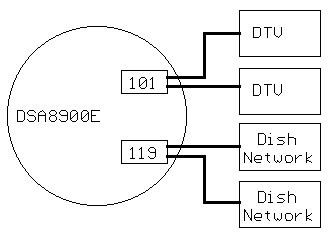
3B) DIRECTV from 101, DIRECTV+ from 101 and 119, Dish Network from 119
A 2 in / 1 out 22 kHz switch is used to support DIRECTV+ from 101 and 119. The switch included with the DSA8900E is not used, and can not be used in this configuration.
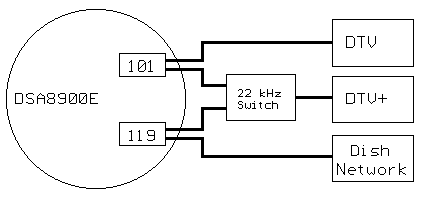
4A) DIRECTV from 101, Dish Network from 119 and 110
A standard dual LNB is used for 110. Dish Network SW21 switches selects 110 or 119. The switch included with the DSA8900E is not used
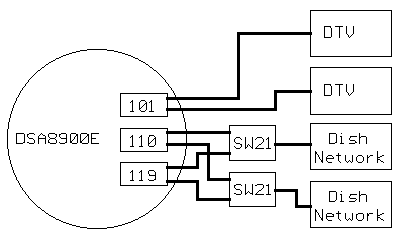
4B) DIRECTV from 101, DIRECTV+ from 101 and 119, Dish Network from 119 and 110.
A standard single or dual LNB is used for 110. A 2 in / 1 out 22 kHz switch is used for DIRECTV+ from 101 and 119. The switch included with the DSA8900E is not used, and can not be used in this configuration.
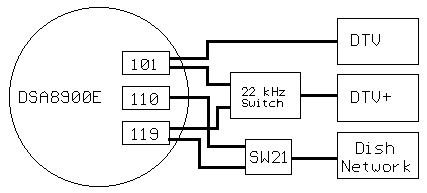
4C) SD core and HD from DIRECTV and Dish Network. Minimum configuration for HDTV from DIRECTV and Dish Network.
DIRECTV+ from 101 and 119, Dish Network from 119 and 61.5, and optionally DIRECTV from 101 (SD core only). A 2 in / 1 out 22 kHz switch is used for DIRECTV+ from 101 and 119. The switch included with the DSA8900E is not used, and can not be used in this configuration.
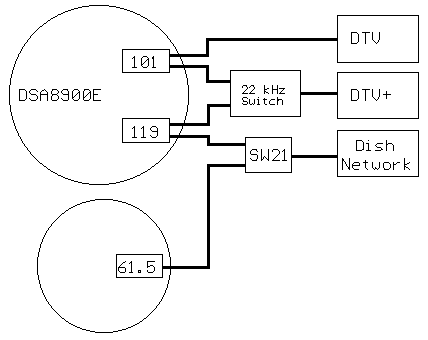
4D) DIRECTV+ from 101 and 119, Dish Network from 119,110 and 61.5, and optionally DIRECTV from 101 (SD core only)
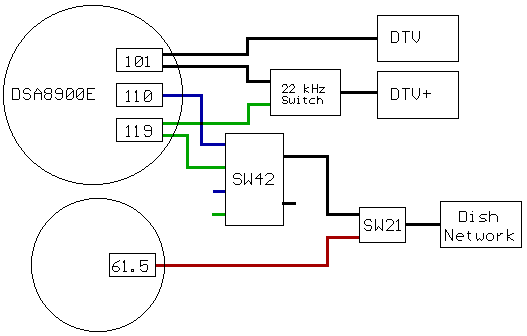
5) DIRECTV+ from 101 and 119, Dish Network from 119
A powered multiswitch splits the 119 signal for use by DTV+ and Dish.
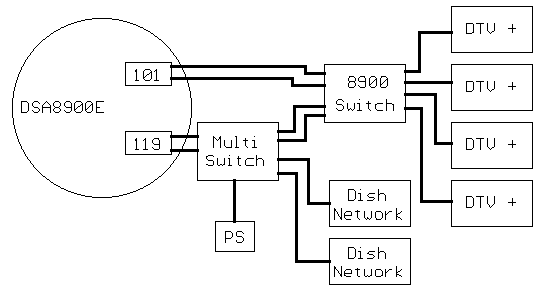
6A) DIRECTV+ from 101 and 119, Dish Network from 119 and 110
A powered multiswitch splits the 119 signal for use by DTV+ and Dish. A standard dual LNB is used for 110. Dish Network SW21 switches selects 119 or 110.
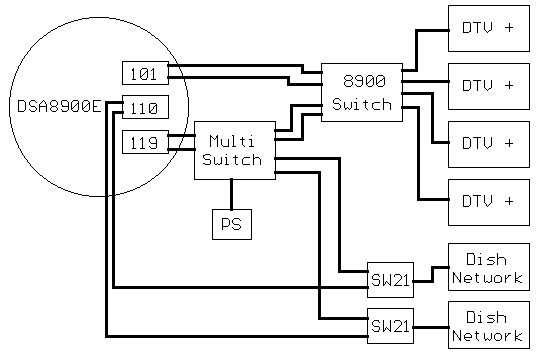
6B) DIRECTV+ from 101 and 119, Dish Network from 119 and 61.5.
A powered multiswitch splits the 119 signal for use by DTV+ and Dish. Dish Network SW21 switches selects 119 or 61.5.
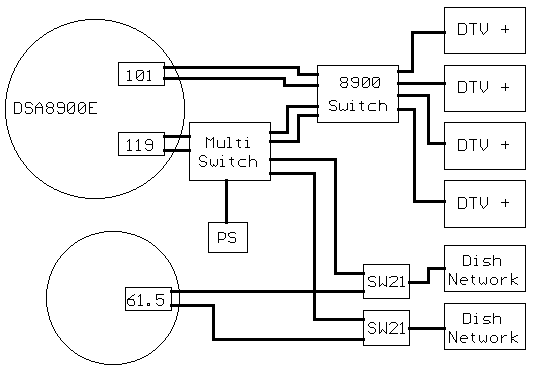
7) DIRECTV from 101, Dish Network from 119, 110 and 61.5
A standard dual LNB is used for 110, a second dish is used for 61.5. A Dish Network SW64 switch selects 119,110 or 61.5. The switch included with the DSA8900E is not used
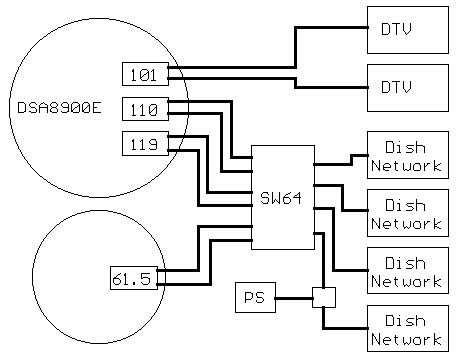
8A) DIRECTV+ from 101 and 119, Dish Network from 119,110 and 61.5
A standard dual LNB is used for 110. A second dish is used for 61.5. A Dish Network SW64 switch selects 119,110 or 61.5. A pair of 2 GHz satellite splitters are used to split the 119 signal between the 8900 and SW64 switches. TV/CATV splitters can not be used! The splitters must pass power from one output only, the power passing output must be connected to the SW64. The 13 volt inputs from the 8900 and SW64 switches must be connected to one splitter, and the 18 volt inputs to the other.
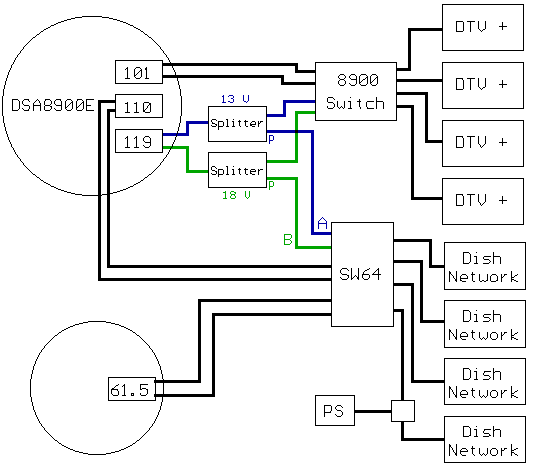
8B) DIRECTV+ from 101 and 119, Dish Network from 119,110 and 61.5 (alternate method)
The use of a powered multiswitch to split the 119 signal allows for less signal loss than a splitter as shown above. The insertion loss of multiswitches varies - check the specs! Don't assume a multiswitch will perform better than a splitter. In some cases a Feed Through Load (marked FTL) may be required for proper operation of the SW64. The feed through load is sold by Dish Network for use in parallel SW64 installations. It provides the DC current draw required by the SW64 to activate an LNB input.
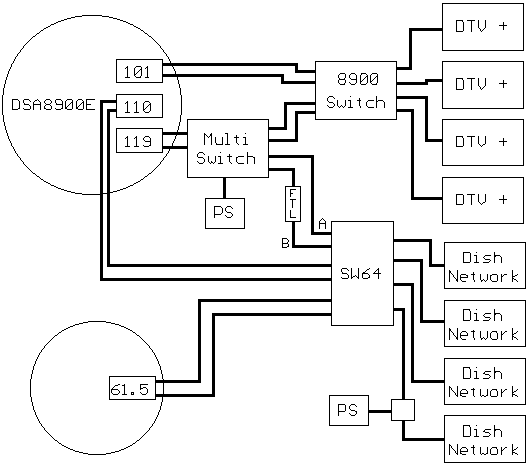
The Hughes version of the RCA DSA8900E (both made by Channel Master)
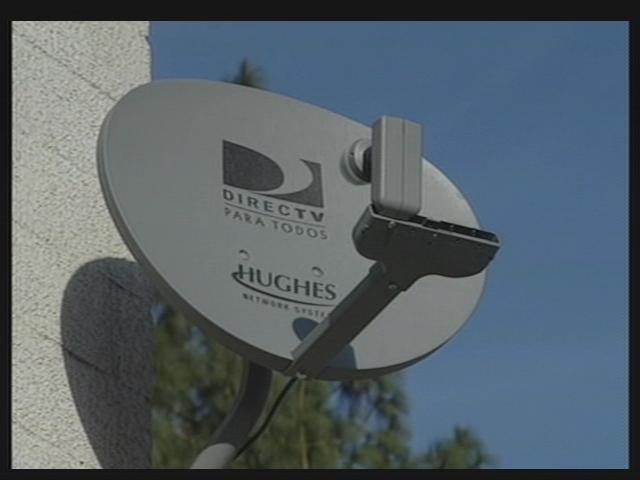
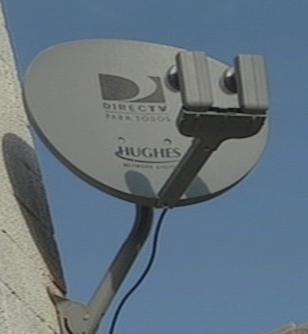
A closeup of the LNB bracket. Note the 5 possible locations for LNBs and the notch/shim in the middle position that slightly lowers the 110 LNB.
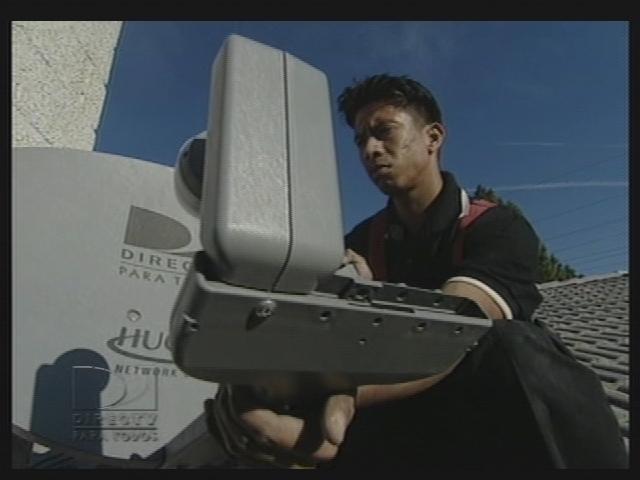
The satellites all orbit an equal distance from the center of the earth.
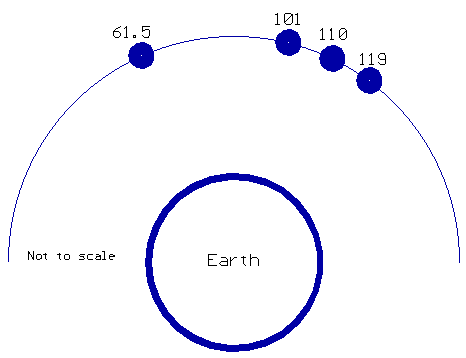
The arc of the 101, 110, 119 orbits is revealed by the dish elevation for southern, middle, and northern United States locations.
| South (30,100) | Mid (37,100) | North (45,100) | |
| 101 | 55.00 | 47.10 | 38.20 |
| 119 | 49.30 | 42.60 | 34.80 |
| Ave | 52.15 | 44.85 | 36.50 |
| 110 | 53.30 | 45.80 | 37.20 |
| Delta | 1.15 | 0.95 | 0.70 |
The 110 LNB is lowered to compensate for the higher than average elevation. The dish reflects the signal like a mirror, so the LNBs see a mirror image of the sky.
